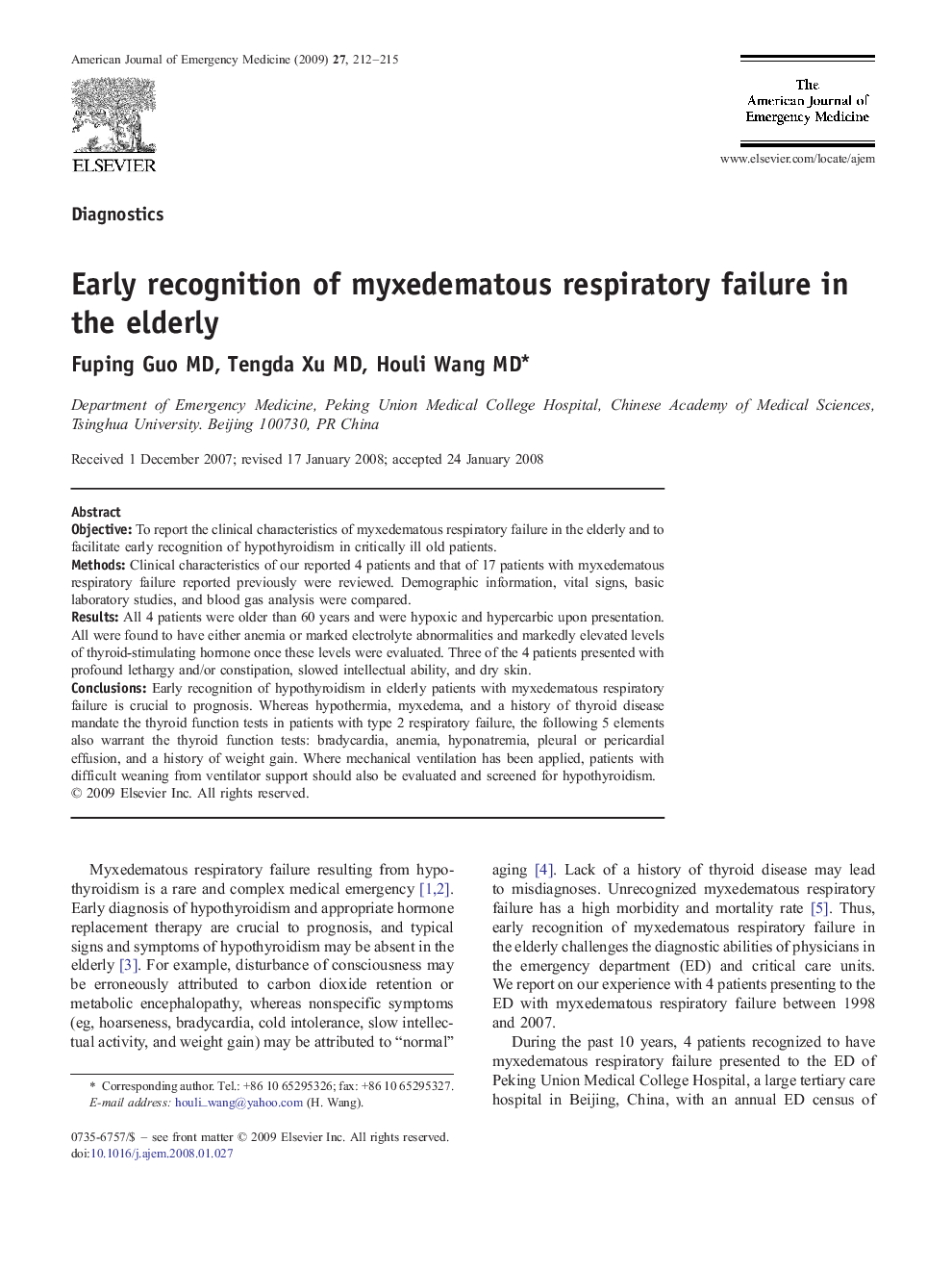| کد مقاله | کد نشریه | سال انتشار | مقاله انگلیسی | نسخه تمام متن |
|---|---|---|---|---|
| 3227413 | 1588169 | 2009 | 4 صفحه PDF | دانلود رایگان |

ObjectiveTo report the clinical characteristics of myxedematous respiratory failure in the elderly and to facilitate early recognition of hypothyroidism in critically ill old patients.MethodsClinical characteristics of our reported 4 patients and that of 17 patients with myxedematous respiratory failure reported previously were reviewed. Demographic information, vital signs, basic laboratory studies, and blood gas analysis were compared.ResultsAll 4 patients were older than 60 years and were hypoxic and hypercarbic upon presentation. All were found to have either anemia or marked electrolyte abnormalities and markedly elevated levels of thyroid-stimulating hormone once these levels were evaluated. Three of the 4 patients presented with profound lethargy and/or constipation, slowed intellectual ability, and dry skin.ConclusionsEarly recognition of hypothyroidism in elderly patients with myxedematous respiratory failure is crucial to prognosis. Whereas hypothermia, myxedema, and a history of thyroid disease mandate the thyroid function tests in patients with type 2 respiratory failure, the following 5 elements also warrant the thyroid function tests: bradycardia, anemia, hyponatremia, pleural or pericardial effusion, and a history of weight gain. Where mechanical ventilation has been applied, patients with difficult weaning from ventilator support should also be evaluated and screened for hypothyroidism.
Journal: The American Journal of Emergency Medicine - Volume 27, Issue 2, February 2009, Pages 212–215